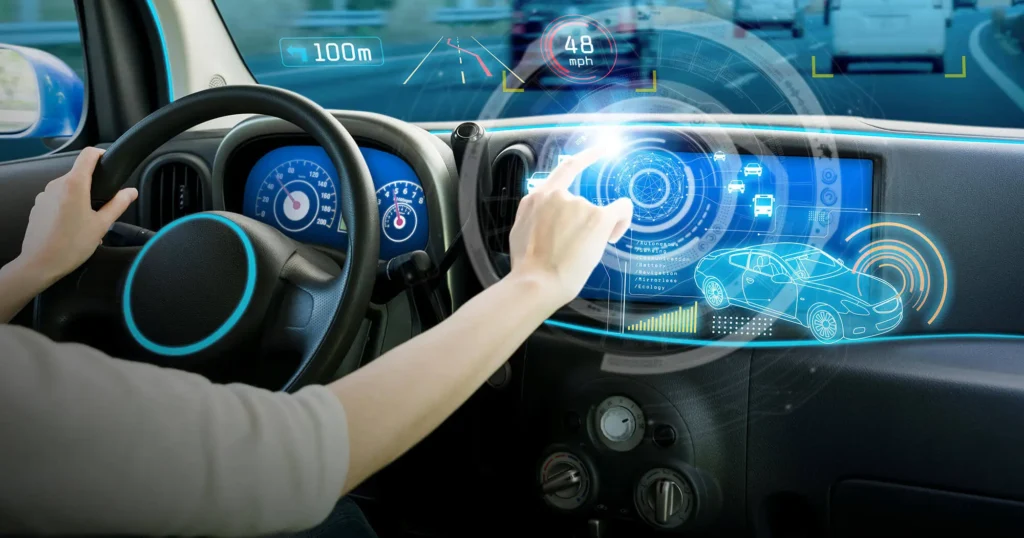
In the realm of automotive innovation, lidar (Light Detection and Ranging) technology stands out as a transformative force, reshaping how vehicles perceive and interact with their environment. This article delves into how lidar is revolutionizing car safety and autonomy, exploring its advantages, challenges, and future prospects.
### What is Lidar?
Lidar is a remote sensing technology that uses laser light to measure distances. By emitting pulses of laser light and analyzing the time it takes for these pulses to bounce back after hitting an object, lidar systems create detailed 3D maps of the surroundings. This technology has been employed in various fields, from environmental monitoring to archaeology, but its application in the automotive industry is particularly groundbreaking.
### How Lidar Enhances Automotive Safety
**1. Precise Object Detection:**
Lidar’s high-resolution mapping capability allows for precise detection of objects in a vehicle’s path. Unlike traditional radar or camera systems, which may struggle with distinguishing between different types of obstacles or detecting objects in low-light conditions, lidar provides a three-dimensional view of the environment. This level of detail improves the vehicle’s ability to identify and react to potential hazards, such as pedestrians, cyclists, or other vehicles.
**2. Enhanced Night and Weather Performance:**
Traditional cameras and radar systems can be limited by poor visibility conditions such as fog, rain, or darkness. Lidar, however, performs consistently across varying light and weather conditions. Its laser pulses are not affected by ambient light, making it particularly effective in scenarios where visibility is compromised.
**3. Real-Time Data Processing:**
Lidar systems can generate millions of data points per second, offering real-time updates about the vehicle’s surroundings. This rapid data processing allows for quick decision-making and immediate response, which is crucial for advanced driver-assistance systems (ADAS) and autonomous driving.
### Lidar and Autonomous Vehicles
As the push towards fully autonomous vehicles intensifies, lidar is increasingly seen as a key component in the development of self-driving cars. Here’s how lidar contributes to the evolution of autonomy:
**1. Creating Detailed Maps:**
Lidar’s ability to produce high-resolution 3D maps is fundamental for autonomous vehicles. These maps help vehicles understand complex environments, including road layouts, lane markings, and the presence of static objects. By integrating lidar data with other sensors, autonomous systems can navigate and plan routes more effectively.
**2. Improving Sensor Fusion:**
In autonomous vehicles, lidar is often used in conjunction with radar, cameras, and ultrasonic sensors. This sensor fusion approach leverages the strengths of each technology, enhancing overall system reliability and accuracy. Lidar’s detailed spatial information complements radar’s ability to detect objects at longer ranges and cameras’ capacity to recognize specific visual features.
**3. Enabling Robust Navigation:**
Lidar’s precise mapping and obstacle detection capabilities support safe and efficient navigation in complex driving scenarios. Whether it’s maneuvering through dense urban environments or adapting to unexpected changes in the road, lidar helps autonomous vehicles maintain situational awareness and make informed driving decisions.
### Challenges and Considerations
While lidar offers numerous advantages, it also faces several challenges:
**1. Cost and Accessibility:**
Historically, lidar systems have been expensive, which has limited their widespread adoption. However, ongoing advancements in technology and manufacturing processes are driving down costs, making lidar more accessible for various applications.
**2. Integration with Existing Technologies:**
Integrating lidar with existing vehicle systems and ensuring compatibility with other sensors can be complex. Effective sensor fusion and data interpretation are crucial for maximizing lidar’s benefits and ensuring seamless operation.
**3. Data Privacy and Security:**
As vehicles become more connected and data-driven, ensuring the privacy and security of lidar data becomes increasingly important. Manufacturers must implement robust security measures to protect against potential vulnerabilities and unauthorized access.
The Future of Lidar in Automotive Technology
The future of lidar in the automotive industry looks promising. Continued advancements in lidar technology are expected to improve its performance, reduce costs, and enhance integration with other systems. As autonomous driving becomes more prevalent, lidar will play a pivotal role in ensuring the safety and reliability of self-driving vehicles.
.jpg)
In summary, lidar technology represents a significant leap forward in automotive safety and autonomy. By providing precise, real-time information about a vehicle’s surroundings, lidar enhances the capabilities of both driver-assistance systems and fully autonomous vehicles. As the technology evolves, it promises to drive further innovations and contribute to a safer, more connected future on the road.


